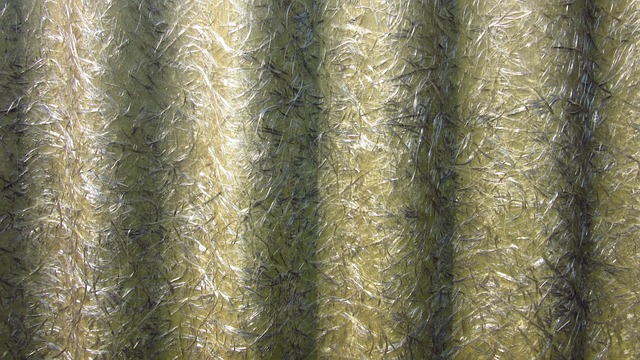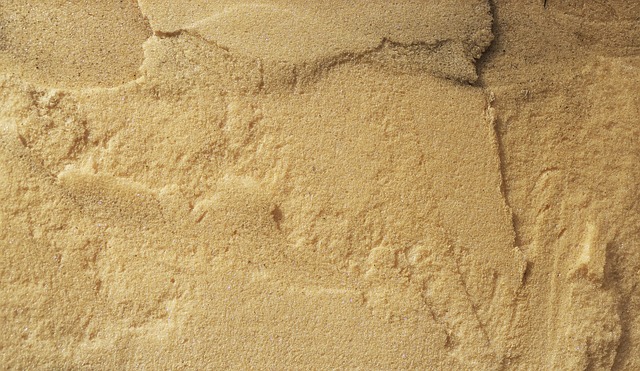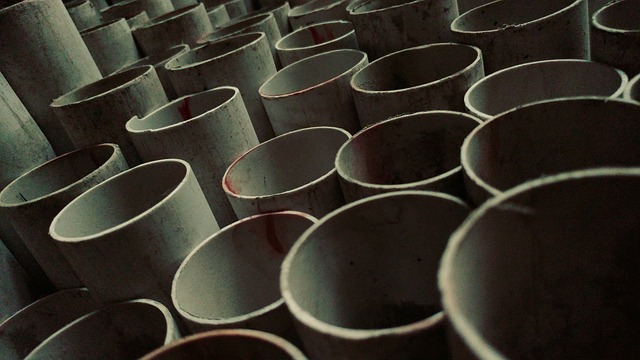Safe Alternatives to Asbestos: Modern Insulation and Construction Materials
Last Updated on 19 December 2023
When it comes to creating safer and healthier living spaces, it is crucial to recognise and embrace safe alternatives to harmful substances. This cannot be emphasised enough. One such harmful substance is asbestos, which has received a lot of attention because of its health risks. Asbestos, a mineral that was once extensively utilised in construction and various industries, has been associated with serious health conditions such as lung cancer and mesothelioma. In order to tackle these risks, the UK has been proactively searching for alternatives and substitute materials for asbestos that can guarantee the safety of workers and residents, while also promoting sustainable construction practises.
In this guide, we will explore different safe alternatives to asbestos in the UK. We will discuss their advantages, uses, and how they contribute to creating a safer and more sustainable future.
Understanding the Dangers of Asbestos Exposure
To fully explore the alternatives, it is important to first grasp why asbestos is deemed hazardous. When asbestos fibres are released into the air, they can be breathed in and get trapped in the lungs, which can cause severe respiratory diseases. Exposure to asbestos over a long or even short period of time has been linked to serious health conditions such as lung cancer, asbestosis, and mesothelioma. Therefore, it is crucial to prioritise the containment or removal and replacement of asbestos for the sake of public health.
Exploring Safe Alternatives To Asbestos: Unleashing the Power of Innovation
The construction industry in the UK has made impressive progress in discovering practical alternatives to asbestos that prioritise the well-being and safety of workers while maintaining high standards of quality. These alternatives include a variety of materials and technologies that provide both durability and eco-friendliness.
Cellulose fibre insulation
Cellulose fibre insulation is a safe and efficient alternative to insulation that contains asbestos. It is made from recycled paper, making it an environmentally friendly option. This product offers exceptional thermal and acoustic insulation properties, which not only helps to lower energy usage but also promotes a healthier indoor atmosphere. Cellulose insulation is a convenient option for both residential and commercial buildings due to its ease of installation and lack of health risks.
Fibreglass
Another widely used alternative and substitute for asbestos is fibreglass. Fibreglass is made up of delicate glass fibres, which provide excellent heat resistance and insulation capabilities. It is frequently utilised in insulation, roofing materials, and even automotive components. Fibreglass is a safe alternative to asbestos, as it is non-toxic and does not present any health hazards for both those who use it and those who install it.

Fibreglass
Glass wool and mineral wool
Glass wool and mineral wool, which are also known as rock wool or stone wool, have become increasingly popular as highly efficient insulation materials. These fibres possess excellent resistance to fire, moisture, and pests, which makes them highly suitable for a wide range of construction applications. Mineral wool is a great choice when it comes to finding a safe and effective alternative for a range of applications. It can be used for insulation, fireproofing, and soundproofing, among other uses.
Polyurethane foam
Polyurethane foam is a highly versatile material that can be utilised as an alternative for asbestos in a wide range of applications. It is commonly utilised for insulation, cushioning, and sealing applications. Due to its versatility and exceptional insulation qualities, it has become a popular choice for modern construction projects. Polyurethane foam is a great choice for thermal insulation because it effectively keeps heat in or out, all while being lightweight and simple to install. Additionally, it is non-toxic and does not pose any risks to human health.

Polyurethane foam
Cementitious board
Cementitious boards that are reinforced with natural fibres provide a long-lasting and fire-resistant option as a substitute for building materials that contain asbestos. Roofing, siding, and interior applications are where they are most commonly used.
Natural Fibre Composites/Cement
The use of natural fibre cement is becoming increasingly popular as a more environmentally friendly option compared to asbestos cement. This innovative material blends together natural fibres such as jute, sisal, and coir with cement, resulting in a building material that is both long-lasting and environmentally friendly. Natural fibre cement is a fantastic choice for various construction needs, such as siding, roofing, and more. It boasts impressive strength and water resistance, making it highly suitable for these applications.
PVC and Vinyl Alternatives
Polyvinyl chloride (PVC) and vinyl materials are commonly used as alternatives to products that contain asbestos in a wide range of applications. These include flooring, pipes, and roofing, among others. These products have gained a reputation for being highly durable and resistant to moisture.

PVC pipes
Gaskets for High-Temperature Applications
High-temperature gaskets play a critical role in industrial settings by effectively sealing joints and preventing leaks in equipment that is exposed to extremely high temperatures. In the past, asbestos was commonly used for this purpose. However, nowadays, there are safer alternatives available, like elastomeric and graphite gaskets. These alternatives offer the same level of performance without the health hazards linked to asbestos exposure.
Exterior cladding systems
Exterior cladding systems are crucial for safeguarding buildings against various weather conditions. In the past, people used to use materials containing asbestos for cladding. However, nowadays, there are safer alternatives available that provide improved durability and aesthetics. These alternatives include metal cladding, fibre cement panels, and engineered wood siding. By using these options, we can ensure both safety and visual appeal.

Metal cladding
Safer Alternatives to asbestos in the Automotive Industry
Due to health concerns, the automotive industry has also made a shift away from using materials in brake pads and clutch discs that contain asbestos. There are safer options available when it comes to brake pads. Ceramic, organic, and semi-metallic brake pads are great alternatives that offer effective braking performance. The best part is that these options don’t pose any health risks like asbestos exposure does.
Safer Options to asbestos in the Textile Industry
In the past, asbestos was commonly used in protective clothing for firefighters and industrial workers because of its ability to resist fire. In recent times, there has been a significant development in textiles. They are now treated with flame-retardant coatings, non-toxic chemicals, and synthetic fibres. These advancements provide excellent protection without posing any risks to the health of those who wear them.
Green building materials
The green building movement puts a strong focus on using construction materials that are environmentally friendly and free from toxins. Due to ongoing efforts, a variety of sustainable alternatives to asbestos have been developed. These alternatives include recycled glass, natural clay, and low-VOC paints. These alternatives help improve the quality of indoor air and minimise the environmental impact of construction.
Frequently Asked Questions (FAQs)
Are the alternatives to asbestos more expensive?
While it’s true that certain alternatives may come with a higher initial price tag, they often prove to be more cost-effective in the long run. This is because they tend to be more durable and energy-efficient, leading to savings over time.
Why is it important to have safe alternatives to asbestos?
It is crucial to have safe alternatives to asbestos in order to safeguard the well-being of people and the environment. We can contribute to sustainable construction practises and reduce the occurrence of asbestos-related diseases by using materials that are safe for our health.
Are safe alternatives equally effective as asbestos?
Yes, modern alternatives have been specifically designed to offer similar or even better performance while eliminating the health risks associated with asbestos.
Is it easy to find construction materials that are free of asbestos?
Yes, there are plenty of asbestos-free materials available in the market that are commonly used in construction projects.
How can I make sure that my building remains safe during the renovation process?
It is important to hire qualified professionals who have been trained in asbestos identification and removal when undertaking renovations. This ensures that the handling and disposal of asbestos is done correctly and safely.
What steps should I take if I suspect asbestos in my property?
If you have concerns about asbestos, it is important to seek guidance from professionals who can perform accurate testing and provide you with appropriate advice on how to proceed.
Are there any regulations in place that govern the use and removal of asbestos?
Yes, the UK has implemented stringent regulations to ensure the safe use, removal, and disposal of materials containing asbestos in order to protect public health. The Control of Asbestos Regulations 2012 (CAR 2012) is the main framework for managing the risks associated with asbestos in non-domestic premises and the common areas of domestic premises. It includes requirements for identification, assessment, and management of asbestos-containing materials (ACMs). CAR 2012 also outlines responsibilities for dutyholders, such as building owners, employers, and those responsible for maintenance and repair.
Conclusion – Safe Alternatives To Asbestos
In conclusion, the UK’s dedication to promoting healthier living and working environments is evident in its efforts to find safe alternatives to asbestos. The construction industry is leading the charge towards a future where health and safety take centre stage, thanks to its embrace of innovation and sustainable practises.
Using natural fibres, advanced insulation materials, or alternatives to PVC can provide a safer and more environmentally friendly approach. These options not only protect against potential health risks but also contribute to a greener and more sustainable future.
Need asbestos advice?
We hope you found our article on the safe alternatives to asbestos both useful and informative. If you need any help or advice at all with any aspect of asbestos then we’ll be very happy to assist you. Give us a call and our experts will give you some advice and guidance on whatever if is you’re concerned about.
Please contact us on 0800 141 2676, email us at info@rbasbestos.co.uk or fill in the form below.
Our professional asbestos surveyors conduct asbestos inspections and asbestos surveys every day across the UK on all types of properties, both residential and commercial, for private home owners and commercial property Managers and owners. So when it comes to managing asbestos in your property, you’re in very safe hands with RB Asbestos Consultants.

